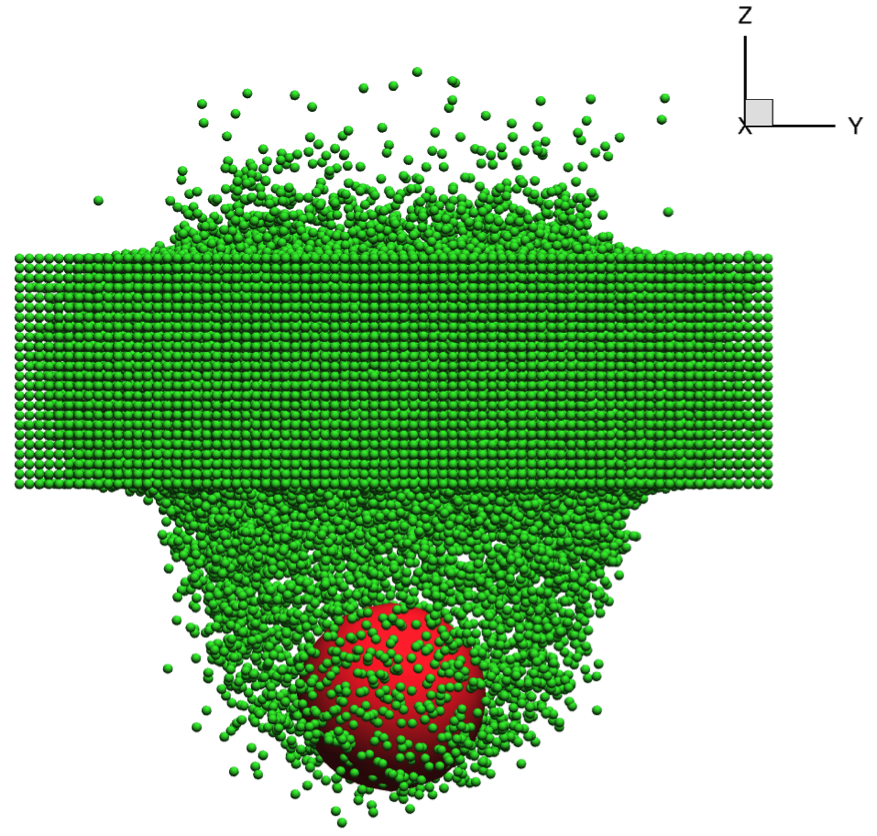| To protect against high temperatures, gas turbines use highly porous ceramic thermal barrier coatings (TBCs) which are susceptible to erosion and foreign object impact damage. Few numerical tools exist which are capable of both accurately capturing the specific failure mechanisms inherent to TBCs and iterating design parameters without the requirement for coupled experimental data. To overcome these limitations, I’m developing a discrete element model (DEM) to simulate the microstructure of a TBC using a large-scale assembly of bonded particles. The particles can be combined to create accurate representations of TBC geometry and porosity. The inclusion of collision-driven particle dynamics and bonds derived from displacement-dependent force functions endow the microstructure model with the ability to deform and reproduce damage in a highly physical manner. Typical TBC damage mechanisms such as compaction, fracture and spallation occur automatically, without having to tune the model based on experimental observation. Therefore, the first order performance of novel TBC designs and materials can be determined numerically, greatly decreasing the cost of development. To verify the utility and effectiveness of the proposed damage model framework, a nanoindentation materials test simulation was developed to serve as a test case. A good correlation was found between the predicted properties calculated by the model and those found through experimental nanoindentation tests. Furthermore, conforming to the benefits of DEM, the model was able to accurately recreate the same material damage characteristics observed in literature, such as the onset of inelastic deformation from fracture and creep. Watch the video… |


